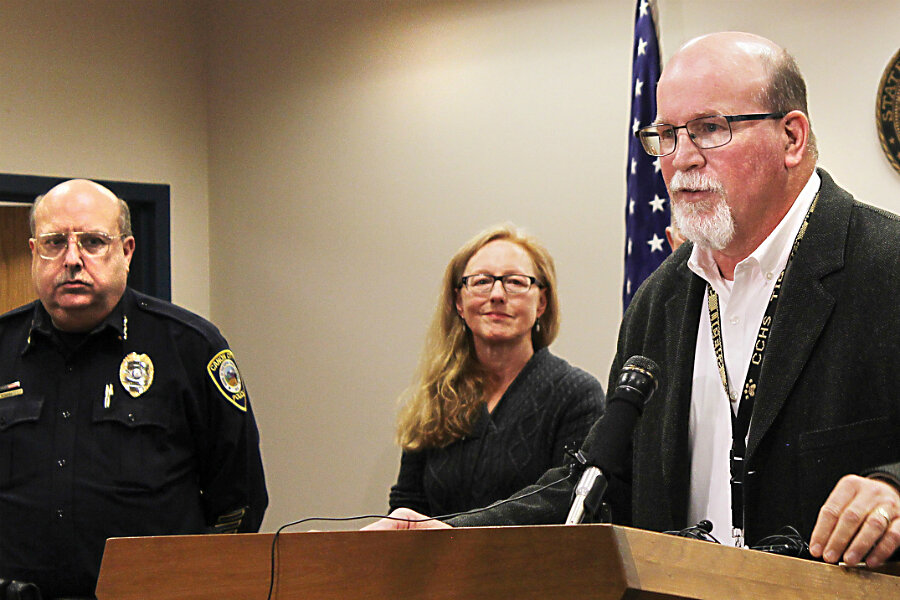Colorado high school sexting scandal: How to deal with nude photos
Loading...
A community in southern Colorado is reeling with shock as authorities investigate an apparent case of sexting involving at least 100 students at Canon City High School.
On Wednesday, the district released information regarding a “sexting ring” at the high school that had been exchanging explicit photos.
According to Superintendent George Welsh, at least 100 kids were involved, including half the football team, prompting the cancellation of their final game of the season Friday.
During a news conference earlier this week, Mr. Welsh acknowledged the behavior had been going on for some time.
"Our suspicions are that it's been going on several years," he said, according to the Canon City Daily Record. "We suspect for sure last year, because it looks like there were several kids involved who have graduated and moved on."
On Friday, authorities said it could take a month to sort the offenders from the victims in the scandal.
The Fremont County District Attorney Thom LeDoux said that investigation would focus on whether any adults were involved, whether children were coerced into participating, and whether there was any corresponding sexual contact.
"We will review each case on an individual basis. I can't predict how we will respond to each of these cases. It is a possibility that students will have to register as sex offenders," said Mr. LeDoux at a Friday news conference.
Felony porn charges could also be filed. LeDoux warned that consent doesn't exist when taking or exchanging nude photographs of students under age 18.
The investigation began Monday after school administrators received student reports and anonymous tips through "Safe2Tell," a state-funded student safety hotline.
The Denver Post reports, “At least one of the cellphones containing nude pictures had an application in which an icon of a calculator was the entrance to a password-protected cache of nude photographs. Even if parents were reviewing their child's cellphones, they might not find the hidden collection of pictures.”
During a community meeting hosted on Thursday night by the school, administration and law enforcement officials advised parents how to deal with the crisis.
"It's just a nationwide problem, it just happened that it's really exposed here," parent Michelle Barnes said.
"The sad part is you could probably go to any high school and grab cellphones from all of the students and there is going to be pictures of sexting," parent Gina Devonshire said, according to AOL.com.
Anne Collier, a blogger on youth online safety writes in The Christian Science Monitor, “educators and parents who discuss sexting with teenagers often fail to recognize that young people are, in fact, competent, moral thinkers that with diverse reasons for and opinions about sexting. “
Quoting Sydney-based researcher and author Nina Funnell, Ms. Collier offers her recommendations on how to talk with young people about “nudes” or “selfies." She suggests that conversations should be:
Pro-active (not reactive)
“Evidenced-based
“Ongoing, not one-offs (like a single school assembly or class)
“Gender-inclusive (not heteronormative)
“Free from demonizing technology or young people
“Build on young people’s strengths and ethical decisionmaking ability
“Developed in consultation with young people."








